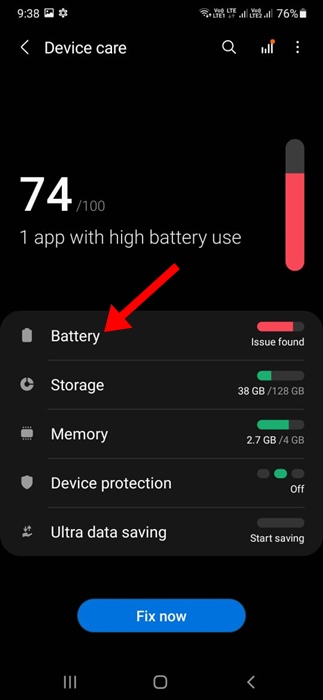Modern smartphones are designed to optimize performance and battery life through various mechanisms, one of which is the deep sleep feature for apps. This function allows users to control how applications behave in the background, potentially conserving power and enhancing device efficiency. But what exactly happens when you place an app in deep sleep? Understanding this process can help users make informed decisions about managing their apps and maintaining optimal device health.
When an app is put into deep sleep mode, it essentially stops running in the background, halting its ability to receive updates or notifications unless explicitly opened by the user. This article explores the impact of deep sleep on both battery life and overall system performance, providing insights into whether this feature should be utilized for specific applications. We'll delve into how different apps respond to being placed in deep sleep and examine potential downsides that might arise from using this setting.
Deep sleep functionality aims at improving a device's battery efficiency by restricting certain apps from operating in the background. However, placing essential apps like navigation services or messaging platforms in deep sleep could lead to unexpected consequences such as delayed notifications or interrupted functionalities. To better understand these implications, let us first look at how Samsung devices manage apps designated for deep sleep.
Managing Background Activity: Deep Sleep Settings
Samsung Galaxy devices offer a unique setting called Put Unused Apps to Sleep, which helps manage unnecessary background activity by identifying rarely used apps and putting them in deep sleep mode. This section within the settings provides users with greater control over app behavior, allowing manual adjustments to ensure critical applications remain active. Yet, challenges arise when trying to exempt specific apps from entering deep sleep despite configuring unrestricted permissions.
For instance, users may find difficulty adding crucial security software like Avast Antivirus or notification-dependent tools to the Never Sleeping Apps list. Even after setting these apps to Unrestricted under battery usage preferences and disabling automatic permission removals, they still get pushed into deep sleep inadvertently. Such issues highlight the need for refined management options within the operating system.
Understanding these nuances becomes vital as improper configuration can disrupt intended functions of important apps, leading to reduced usability or even data loss due to missed updates or alerts. Therefore, mastering the intricacies of deep sleep settings ensures balanced optimization between energy conservation and functional reliability across all installed applications.
Impact On App Functionality And Battery Life
Deep sleeping apps represent those programs that cease functioning entirely in the background until directly accessed by the user. These apps neither consume resources nor interact with other components while inactive, thereby significantly extending battery lifespan. By strategically selecting which apps enter this state, users can achieve enhanced endurance without compromising primary functionalities.
However, not all apps benefit equally from being placed in deep sleep. For example, productivity suites requiring constant synchronization may suffer from delays if forced into dormancy. Similarly, location-based services like Google Maps might experience degraded performance since they rely heavily on real-time data processing. Balancing between preserving power reserves and maintaining seamless operation poses a challenge worth addressing.
To address these concerns effectively, consider categorizing apps based on usage frequency and necessity before assigning them to either active or deep sleep states. Regularly reviewing and adjusting these assignments according to changing needs ensures optimal balance between resource allocation and desired outcomes. Ultimately, thoughtful application of deep sleep strategies empowers smarter device management practices tailored specifically to individual requirements.
Exploring Alternatives And Enhancements
Community discussions often revolve around questions regarding deep sleep implementation, particularly focusing on practical applications and effectiveness. Users frequently inquire about scenarios where deep sleep proves advantageous versus situations where it introduces complications. One notable query involves determining whether placing frequently utilized apps like Etsy in deep sleep affects overall utility positively or negatively.
In response to such queries, experts recommend exercising caution when applying deep sleep settings indiscriminately. Instead, prioritize analyzing each app's role within daily routines prior to deciding upon appropriate placement. Additionally, explore alternative methods for conserving battery life without sacrificing key features, including scheduling periods of restricted connectivity or employing power-saving modes during less intensive activities.
Moreover, advancements in third-party solutions continue emerging aimed at streamlining deep sleep processes further. Tools like 'Runner' simplify updating deep sleeping apps on compatible Samsung devices running Android versions 8.0+ alongside One UI interfaces. Leveraging these innovations enhances flexibility and adaptability concerning evolving technological landscapes while ensuring sustained compatibility with modern standards.
Balancing Optimization With Usability
The advantages associated with deeper app sleeping extend beyond mere battery preservation; they encompass diminished data consumption and heightened oversight concerning reporting capabilities among others. Nevertheless, adopting aggressive deep sleep policies carries inherent risks impacting core functionalities adversely. Recognizing these trade-offs enables smarter decision-making regarding app management techniques moving forward.
Consider implementing hybrid approaches combining selective deep sleep assignments alongside periodic reevaluations of assigned statuses. Such tactics foster sustainable growth patterns aligning closely with shifting priorities over time. Furthermore, staying informed about emerging trends influencing deep sleep technologies guarantees readiness to embrace forthcoming improvements promptly.
Ultimately, achieving equilibrium between maximizing efficiencies derived from deep sleep methodologies and safeguarding indispensable operational aspects demands vigilance and proactive engagement. Embracing comprehensive strategies incorporating diverse elements contributes towards constructing robust frameworks capable of meeting contemporary challenges head-on while paving pathways toward future successes simultaneously.

